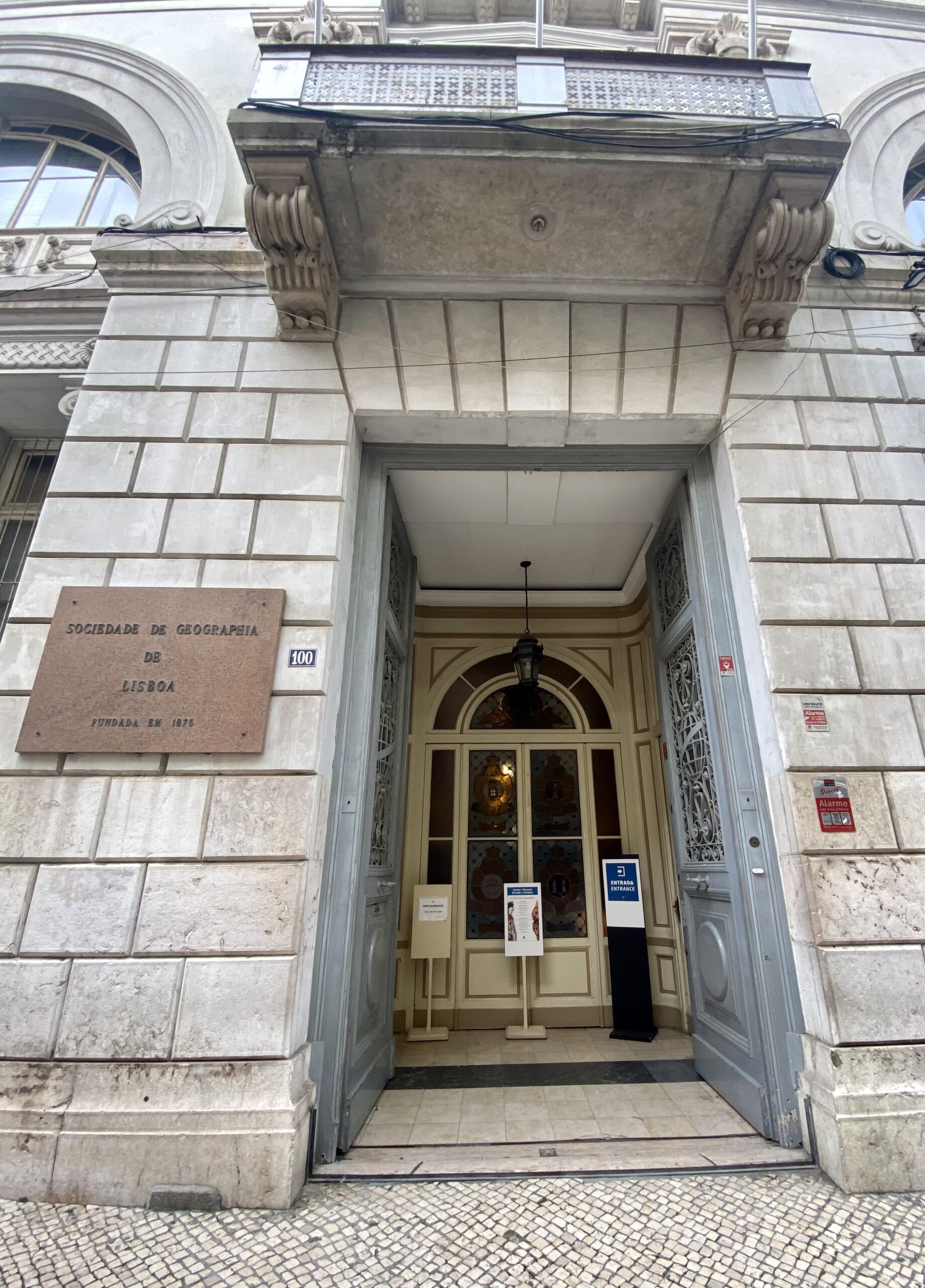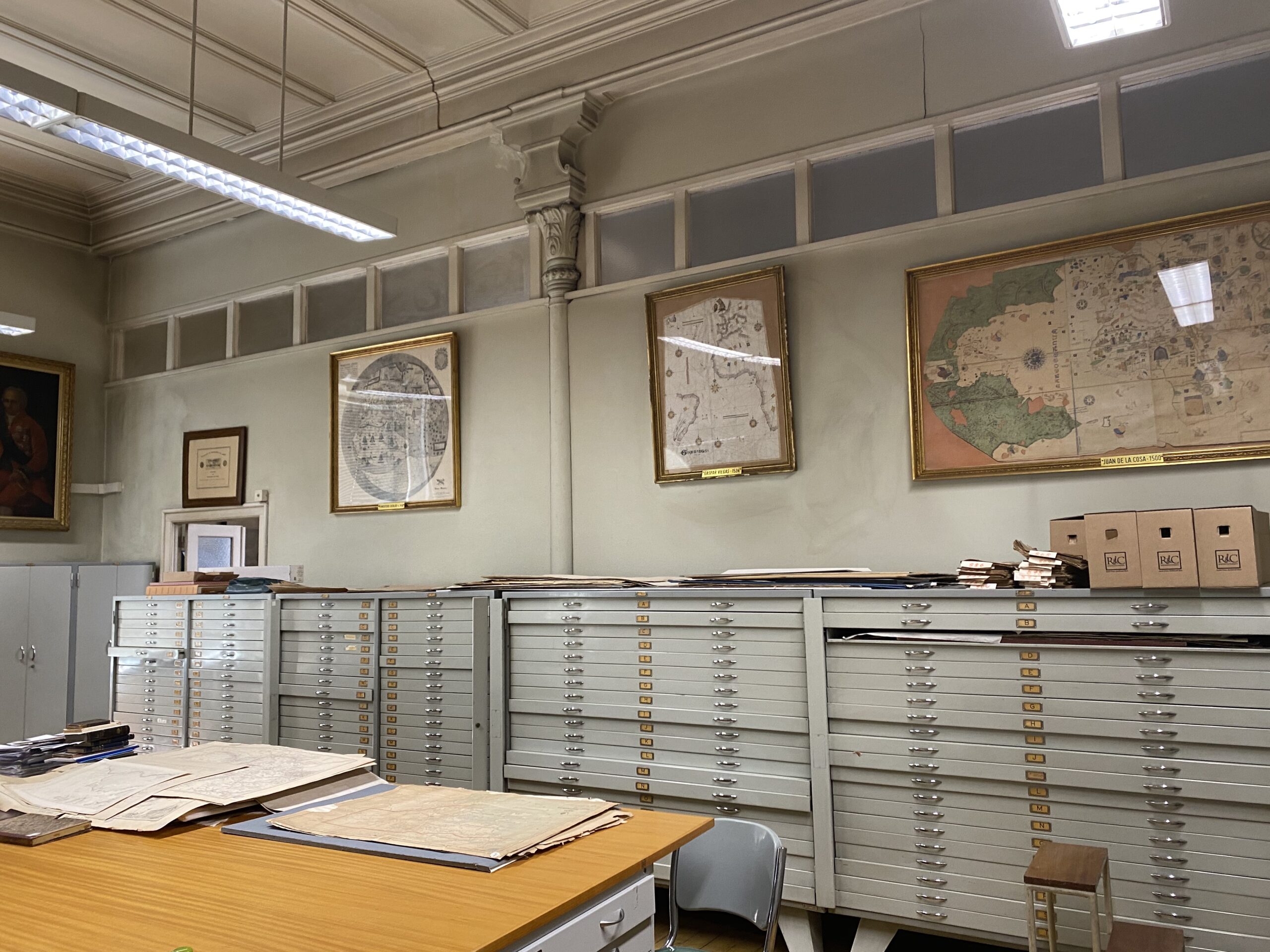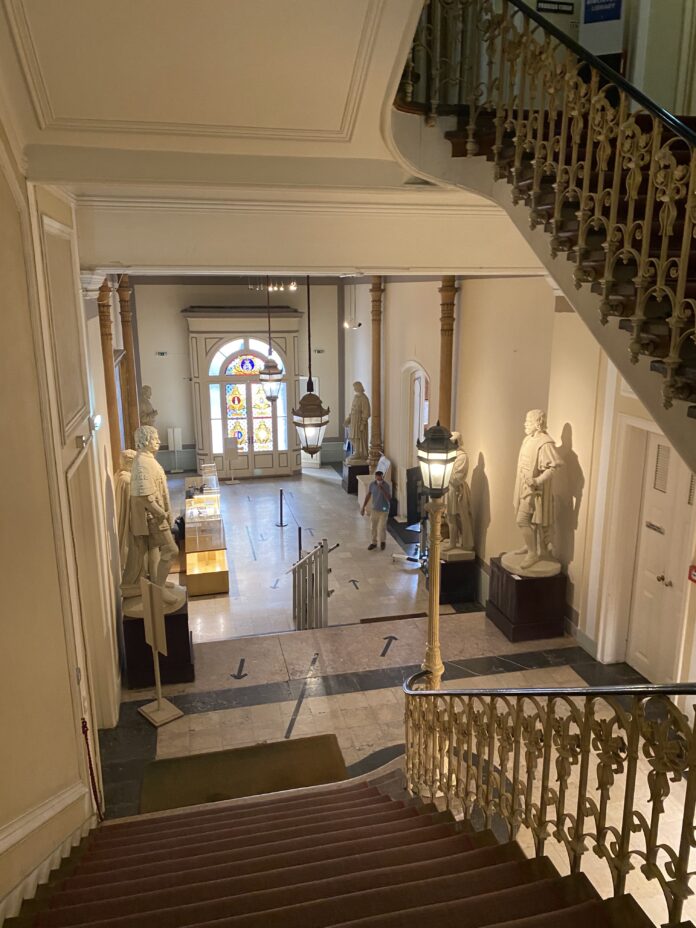Hiding in plain sight on a street parallel to Avenida da Liberdade, close to Praça dos Restauradores, the Museum of the Geographical Society of Lisbon (Museu da Sociedade de Geografia de Lisboa in Portuguese) is a fascinating journey into the history of Portuguese exploration and ethnography.
Formerly known as the “Colonial Museum,” it has been housed in the same building since 1897 and boasts a collection that has expanded through strategic acquisitions and generous donations from travelers linked to former outposts of the Portuguese empire.
From Angola to Macau, the museum showcases a diverse array of artifacts including paintings, sculptures, furniture, fabrics, and even scientific instruments. Stepping through the doors of this geographical society will make you feel as if you have time-traveled to an earlier age of discovery.

History
The Museum of the Geographical Society of Lisbon, part of the Lisbon Geographic Society, has a rich history dating back to its foundation in 1875. Initially established to promote geography and related sciences in Portugal, it quickly gained prominence with the support of intellectuals and politicians like Luciano Cordeiro and Teófilo Braga. The Society’s early objectives included organizing conferences, scientific congresses, and funding exploration trips and investigations.
In 1895, the Society received new statutes focusing on improving Portugal’s natural and economic resources, especially in its overseas territories. Throughout its history, the Society played a crucial role in Portugal’s political landscape, particularly concerning the exploration and governance of African and Asian territories.
Notably, during the Conference of Berlin in 1884, Luciano Cordeiro’s expertise in African politics influenced Portugal’s involvement in African exploration.
During its early years, the Society focused on positioning Portugal in global exploration and colonization. It hosted significant political figures like the Emperor of Brazil, British King Edward VII, the German Emperor, the President of the French Republic, and others. These visits underscored the Society’s pivotal role in national affairs and its esteemed position within Portuguese society.
As time passed, it adapted and fostered connections for Portuguese worldwide. In 1932, an exchange program was initiated, which expanded to Brazil and North America. By the 1960s, the Society’s global influence grew. It established programs connecting Portuguese citizens with their diaspora, culminating in the General Congregation of Portuguese Communities.
Today, the Geographical Society of Lisbon still regularly hosts speakers and events in its elegant conference hall, which is a must-see if it is open at the time of your visit.

Layout and Exhibits
The headquarters of the Geographic Society of Lisbon and its museum are spread out over five floors with a grand staircase and elevator. The entrance hall displays statues of historical figures like Henry the Navigator and Pedro Álvares Cabral in addition to two 16th-century Italian globes showing the known world and constellations.
The first floor is comprised of the Library, Maproom, and Directors’ Meeting Room. The Library is a standout here, with over 230,000 books, manuscripts, magazines, and other documents.
The second floor houses various themed rooms like Portugal, Algarve, Padrões, and India rooms. Each room hosts unique exhibits ranging from ethnographic pieces to historical artifacts linked to Portuguese discoveries.
The Portugal Room serves as a museum room and event space, displaying ethnographic exhibits from various regions. The Algarve Room hosts sessions and conferences and features statues of Vasco da Gama, Henry the Navigator, and Camões.
The India Room has a Renaissance-style stucco ceiling adorned with medallions and houses historical artifacts like flags from expeditions and portraits of King Carlos and Queen Amélia.
The Padrões Room stands out for its collection linked to Portuguese Discoveries, which includes significant inscriptions from Africa and India.
Checking out the entire collection should take around 1 hour. If you have extra time, stop by the museum shop and cafe.
How to Get to the Museum of the Lisbon Geographical Society
The Museum of the Lisbon Geographical Society is located at R. das Portas de Santo Antão 102. The closest Lisbon metro stations to the museum are Rossio on the Green Line (Linha Verde) and Restauradores on the Blue Line (Linha Azul).
Tram: 15E, Buses: #711 #732, #736, #737, #744, #759, #760, #794
Visiting Times & Tickets
The Museum of the Lisbon Geographical Society is open from Monday to Friday from 10 am to 12:45 pm and 2:00 pm to 4:45 pm. It is closed on Saturdays and Sundays, January 1, March 29, April 25, May 1, May 30, June 10, August 15, October 5, November 1, and Christmas Day.
Guided tours are available from Monday to Friday from 10:00 am, and 3:00 pm with a maximum of 20 visitors. To schedule a guided tour, you must send an email to [email protected] or call (+351) 210434037. Tours must be made in advance.
The museum shop is open from 10:00 am to 5:00 pm, and the coffee shop is open from 10:00 am to 5:00 pm.
Tickets cost 5 €. Seniors 65 years and up cost 2 €. Students are 2.50 €. Family tickets are available (4+ members) for 4 € for each member. Children 12 years and under are free in addition to Members of the Geographical Society and disabled visitors with one assistant. Tickets to the restaurant are 3 €. Please pay in cash.
To check out more interesting museums in Lisbon, we recommend the Lisbon Military Museum or the Maritime Museum.


